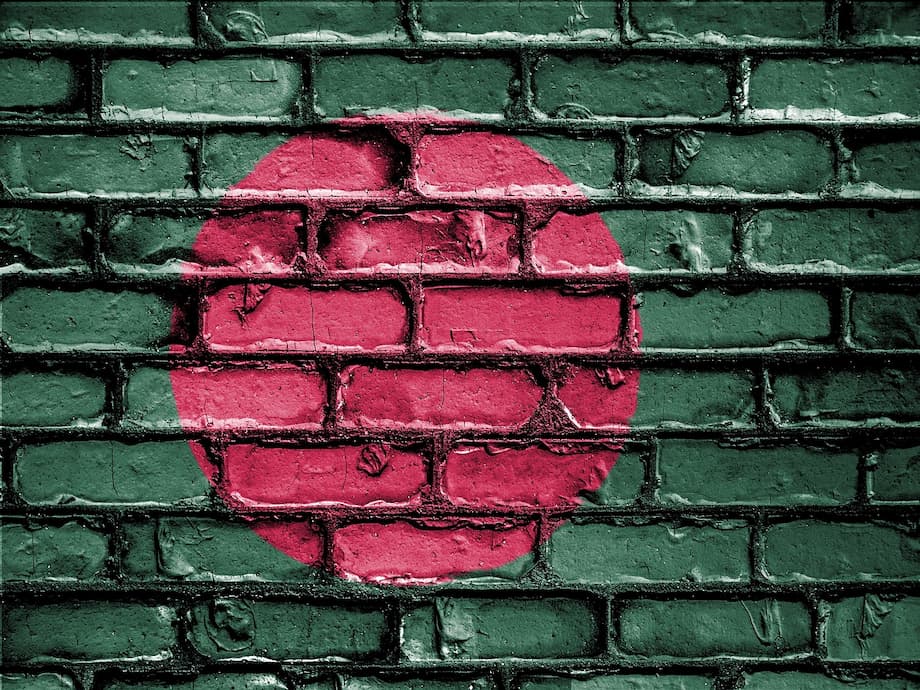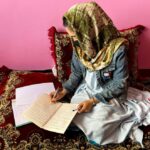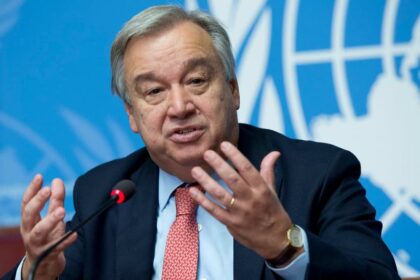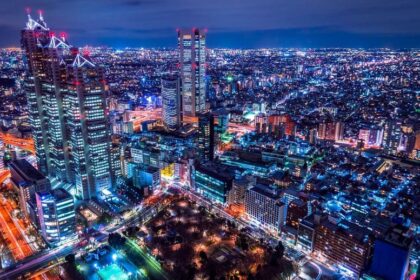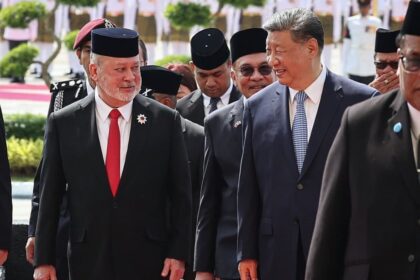Why secularism still matters in Bangladesh today
Bangladesh is living through a fierce contest over identity, power, and the purpose of the state. A rise in far right rhetoric is testing the promise that animated the country’s birth in 1971, when citizens chose a vision anchored in cultural pride, linguistic rights, and equal citizenship. Today’s struggle is not abstract. It affects the safety of minorities, the trust people place in their institutions, and the capacity of a diverse society to share a future without fear. Around the world, communities are proving that backlash is not destiny. The choice facing Bangladesh is similarly real and immediate.
- Why secularism still matters in Bangladesh today
- A global surge of far right ideas, and a Glasgow counter example
- How Bangladesh’s secular promise became muddled
- Imported ideologies and transnational networks
- Youth, protest, and the contested center
- Communities under pressure and rule of law tests
- What would help protect secular heritage now
- Key Points
Secularism in the Bangladeshi context has never meant hostility to faith. It means the state guarantees equal dignity for all communities and refuses to privilege or persecute any group. That principle made possible a plural society where different traditions could flourish. Many Bangladeshis still carry this commitment, including students who have marched for justice and accountability in recent years. The narrative that an entire generation leans far right does not match the full picture. Young people have been shaped by a dysfunctional political culture and by sharp constraints on civic education, yet they have also taken risks to restore inclusive politics.
The stakes are high. Imported hard line ideologies and homegrown intolerance can push the country toward social division and recurring violence. There is another path, one that places equal citizenship ahead of sectarian score settling. The global story is not only a rise in far right movements. There is also a rise in civic courage. A recent demonstration in Glasgow, where locals and immigrants rallied together against hate, offered a reminder that solidarity can beat intimidation. Bangladesh’s own secular heritage provides the inspiration to do the same at home.
A global surge of far right ideas, and a Glasgow counter example
Many democracies are wrestling with exclusionary politics fueled by anxiety over migration, economic strain, and disinformation. In that environment, activists who defend pluralism are building broad coalitions that link labor rights, minority protections, and the safety of refugees. The Glasgow rally captured that spirit. People waved Scottish flags beside Palestinian banners, stood shoulder to shoulder behind messages like Scotland needs migrants and We all bleed red, and insisted that their city should be a place for everyone. It was not a clash. It was a civic act that reduced the space for provocation.
A snapshot from Scotland
The demonstration drew a mix of students, health workers, trade union members, and families. Organizers steered the march away from confrontation. Police deescalated when a small group tried to disrupt. The incident became a small lesson in how to isolate fringe agitation. Nobody denied the anger that exists in society. The crowd chose to channel it toward a demand for dignity, not a pretext for targeting the vulnerable. That is the frame Bangladesh can adopt in its own streets and campuses.
How Bangladesh’s secular promise became muddled
The 1972 Constitution placed nationalism, socialism, democracy, and secularism at the core of the republic. Later changes complicated that clarity. Clauses added during military rule replaced secular formulas and, in 1988, declared Islam the state religion. In the 2010s, a series of rulings and amendments restored secularism as a fundamental principle while keeping Islam as the state religion. These parallel clauses create confusion in law and in public life. Citizens hear two messages at once, and detractors exploit that ambiguity.
International human rights officials have flagged the risks. A United Nations expert on freedom of religion and belief warned in 2015 that the mixed signals weaken protections for minorities and erode confidence in basic rights. The same review urged political leaders to stop using religion as a tool of competition and to match law and practice with the rights to free belief and free expression. The point was simple. A secular state does not erase religion from society, it protects the freedom of every community.
Polarization intensified after the war crimes tribunal of 2013, which deepened the rift between secular forces and Islamist parties. Violence against bloggers, publishers, and progressive activists followed. Parties on the left, once a moral force in independence and later struggles, have been weakened by infighting, repression, and organizational drift. The result is a narrower political field where conservative and nationalist rhetoric travels faster than inclusive messages and where democratic checks are too weak to manage inevitable tensions.
Imported ideologies and transnational networks
Bangladesh has experienced periodic surges of imported hard line ideas. Some groups look to models from Pakistan and Afghanistan, or to movements linked to the Gulf. Senior figures from religious networks in Bangladesh have visited Kabul to observe the new regime there. These channels of influence bring a stricter, top down approach to public life that sits uneasily with Bangladesh’s syncretic traditions. Communities shaped by Sufi practice and centuries of plural exchange feel pressured by a narrower reading of faith and a politics of exclusion.
Ideas do not travel on their own. They move through social media, religious seminaries, charity circuits, political donations, and diaspora reverberations. That does not mean foreign influence explains everything. Domestic grievances, uneven development, and anger at corruption open space for hard line messages. External networks then supply a script and a set of symbols that are packaged for online audiences and street mobilization. The result can be a culture war that feels imported and at odds with Bengali language pride and the secular promise of 1971.
Why this differs from India
India’s majoritarian politics developed over decades inside the country’s own historical debates. Leaders tune their language to regional culture. A prime minister who celebrates Tagore while campaigning in Bengal is practicing a politics that uses local reference points. In Bangladesh, attempts to copy political strategies from abroad often miss the texture of local society. That dissonance is one reason many citizens describe recent shifts as an imported project, not a national conversation.
There is a parallel contrast with China. Many Bangladeshi youths admire China’s economic achievements, yet Chinese Gen Z does not appear to be animated by transnational far right currents in the way that some South Asian online spaces are. Their political attitudes are shaped by domestic narratives and a controlled media environment. The difference underscores how external ideologies can take hold in South Asia when domestic politics leave a vacuum and digital platforms reward provocative content.
Youth, protest, and the contested center
Students were central to the mass protests that peaked in July 2024. Their demands were not about imposing a singular identity. They called for accountability, honest institutions, and a country where power serves the public. The political opening that followed brought new actors. One new party formed from student activism positioned itself as centrist and demanded a fresh constitutional settlement. That move resonated with young voters who want a clean start. It also drew the party into tactical cooperation with conservative groups that oppose the old establishment. The mix of reformist language and alliances with hard line actors has left many citizens unsure about the direction of change.
The caretaker authorities have faced pressure to hold elections quickly, relax bans on parties, and stabilize a volatile economy. Several steps expanded space for rivals of the old ruling party, and some restrictions on Islamist factions were lifted or softened. These moves are defended as a bid to bring all actors back into a legal framework. Critics worry that the rush to manage street pressure gives outsized influence to groups that reject plural norms. If centrist and progressive forces fail to organize, youth anger can be redirected by those who promise purity rather than pluralism.
The left and the vacuum in the middle
Bangladesh’s left once led campaigns for workers, students, and the rural poor. Long years of repression, internal splits, and an image problem have drained their capacity. Many voters view left parties as elitist or disconnected from religious society. Weak links to unions and civic groups, and a lack of digital outreach, have kept them on the margins. When the center is thin and the left is fragmented, the field tilts toward conservative populists and personality driven rule.
Scholars describe a pattern in which governments trade short term calm for concessions to radical groups. That pattern thrived in the last decade when a strong executive structure cut deals with conservative networks to contain unrest. The approach brought stability for a time while narrowing the space for dissent and debate. It also legitimized actors who later demanded more. The lesson is sobering. If the middle does not rebuild, polarization sharpens and groups hostile to secular citizenship gain leverage.
Communities under pressure and rule of law tests
Recent unrest has intensified fear among religious minorities and Sufi communities. In one case, the arrest of a Hindu spiritual figure in Chittagong prompted clashes, public calls for bans on a religious organization, and a wave of communal pressure. The Supreme Court dismissed a legal bid to proscribe that group and affirmed principles of religious coexistence. Interim authorities stated that freedom of religion and association remains a commitment. Minority advocates have urged clarity, warning that proposals to delete secularism from the Constitution would shrink their protections.
Violence in Rajbari on September 5 revealed the stakes. A mob exhumed a body, torched it in public, and attacked a shrine. Police vehicles were vandalized and one follower of the deceased was killed. Another shrine was attacked that day in a different district. When mobs dictate what can be built or who can be buried, faith in the state’s ability to protect citizens collapses. Families then look for protection from private networks, which breeds more vigilantism and deepens the cycle of fear.
Officials have pushed back against claims that the country is being overwhelmed by extremism. In a statement responding to a high profile international report, the Chief Adviser’s Press Wing rejected the narrative as misrepresentation.
The report is misleading and one sided.
That view speaks to legitimate frustration with sensational reporting. It does not erase the responsibility to investigate attacks, prosecute offenders, and guarantee neutral policing. A rights based reading of secularism demands equal safety for all communities and a forceful response to mob violence. Rhetoric can cool tempers for a news cycle. Only steady law, swift justice, and non discriminatory policy can rebuild trust.
What would help protect secular heritage now
Bangladesh is not starting from zero. Its schools, mosques, temples, community centers, and media can all become anchors of inclusion. The Glasgow moment offers a simple lesson. People from different walks of life can stand together for fairness without erasing their identities. That spirit can be translated into policy and practice across five fronts.
Schools and civic learning
Update curricula to teach constitutional values, the language movement, and plural traditions of Bengal in age appropriate ways. Expand teacher training on civic reasoning and respectful debate. Support student clubs that practice problem solving across lines of belief and class. Invest in history instruction that resists conspiracy and honors those who built the republic’s inclusive ideals.
Law, policing, and justice
Adopt clear protocols for preventing and responding to communal violence. Equip police with deescalation skills and mandate body camera use in sensitive operations. Create fast track courts for cases of mob violence and attacks on places of worship. Make public the outcomes of prosecutions so communities see that law, not pressure, decides such cases.
Politics and party finance
Increase transparency on party donations and foreign funding to reduce the pull of outside ideological patrons. Incentivize cross party pacts that protect houses of worship and civic spaces during campaigns. Encourage parties to publish positions on secular citizenship and minority rights, then hold them to those positions in televised debates.
Digital space and foreign influence
Expand digital literacy programs that help young people spot manipulated content, sectarian bait, and hate speech. Use independent fact checking partnerships to label inauthentic networks. Strengthen financial monitoring of charities and educational networks that channel funds for political aims. Encourage platforms to promote counterspeech led by respected local figures.
Culture, mosques, and temples
Fund cultural festivals, book fairs, and community dialogues that celebrate the shared heritage of Bengal. Support local clergy and lay leaders who uphold inclusive preaching. Protect shrines and temples with community vigilance schemes that include youth, women, and elders. Encourage media programming that profiles interfaith service projects and collaborative problem solving at the neighborhood level.
Secularism is not atheism. It is a constitutional guardrail for a diverse country. It gives every Bangladeshi a stake in national life, regardless of faith or ethnicity. Upholding it today means pushing back against imported dogmas, rejecting the politics of scapegoating, and building institutions that treat all citizens fairly.
Key Points
- Bangladesh’s Constitution now contains both secularism and Islam as state religion, a tension that breeds ambiguity in law and politics.
- Polarization accelerated after the 2013 war crimes tribunal, while violence against bloggers and publishers narrowed space for dissent.
- External ideological currents from Pakistan, Afghanistan, and parts of the Middle East have influenced segments of Bangladesh’s religious politics.
- India’s majoritarian politics are more domestically rooted, while in Bangladesh some actors have tried to import models from abroad.
- Student activism pushed a democratic opening in 2024, but new centrist projects risk drift toward alliances with conservative groups unless the middle rebuilds.
- Minorities face pressure amid calls to dilute secular language, while courts and interim authorities signal commitments to religious coexistence.
- Mob attacks, including a body exhumation and shrine assaults, reveal urgent gaps in rule of law and citizen protection.
- Officials reject claims of an extremist takeover, yet accountability for attacks and neutral policing remain essential.
- Practical steps can strengthen secular citizenship: civic education, transparent party finance, better policing, digital literacy, and support for inclusive religious and cultural leadership.
- Bangladesh’s secular heritage is a living asset. Protecting it is a daily choice, made through law, education, and civic courage.


